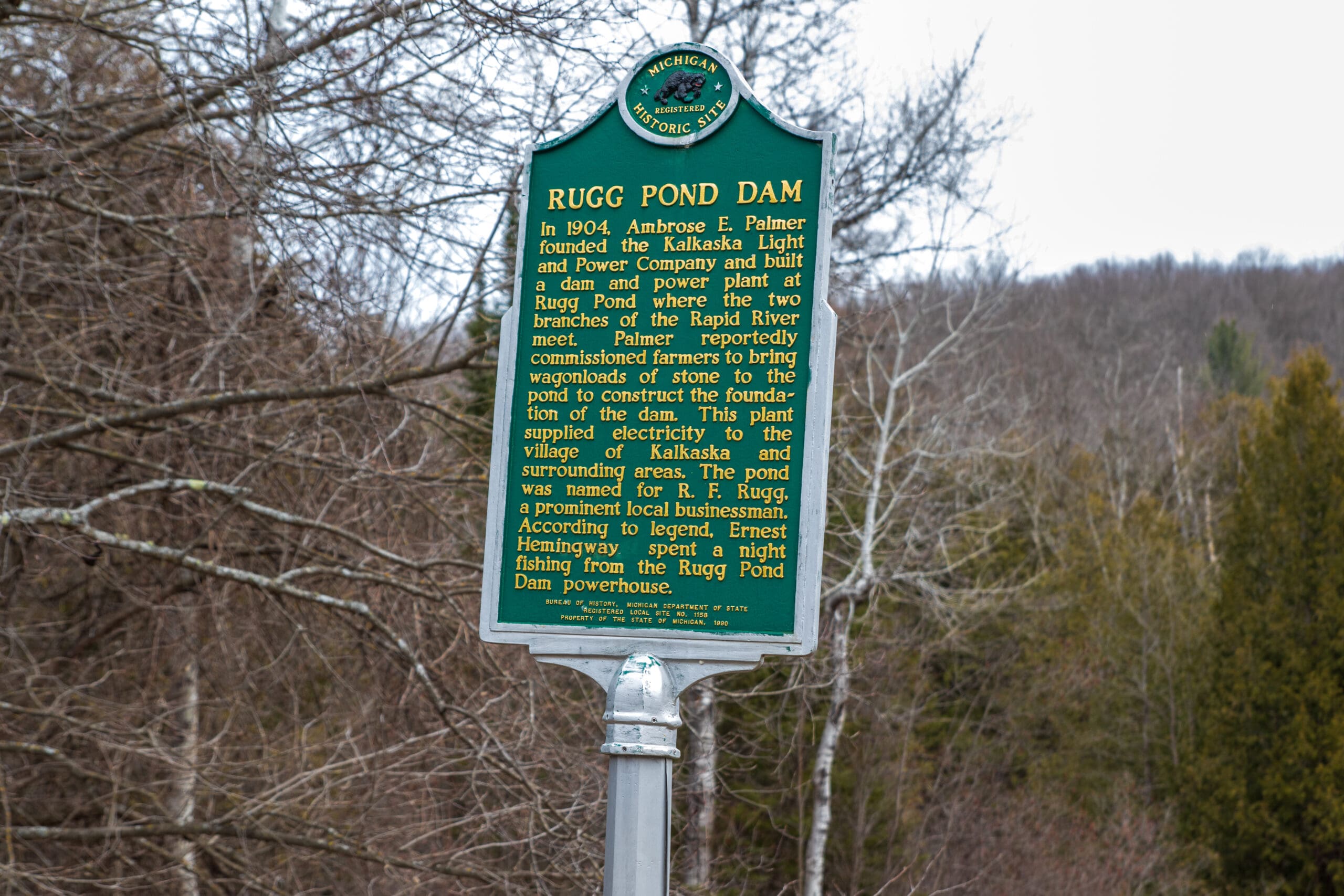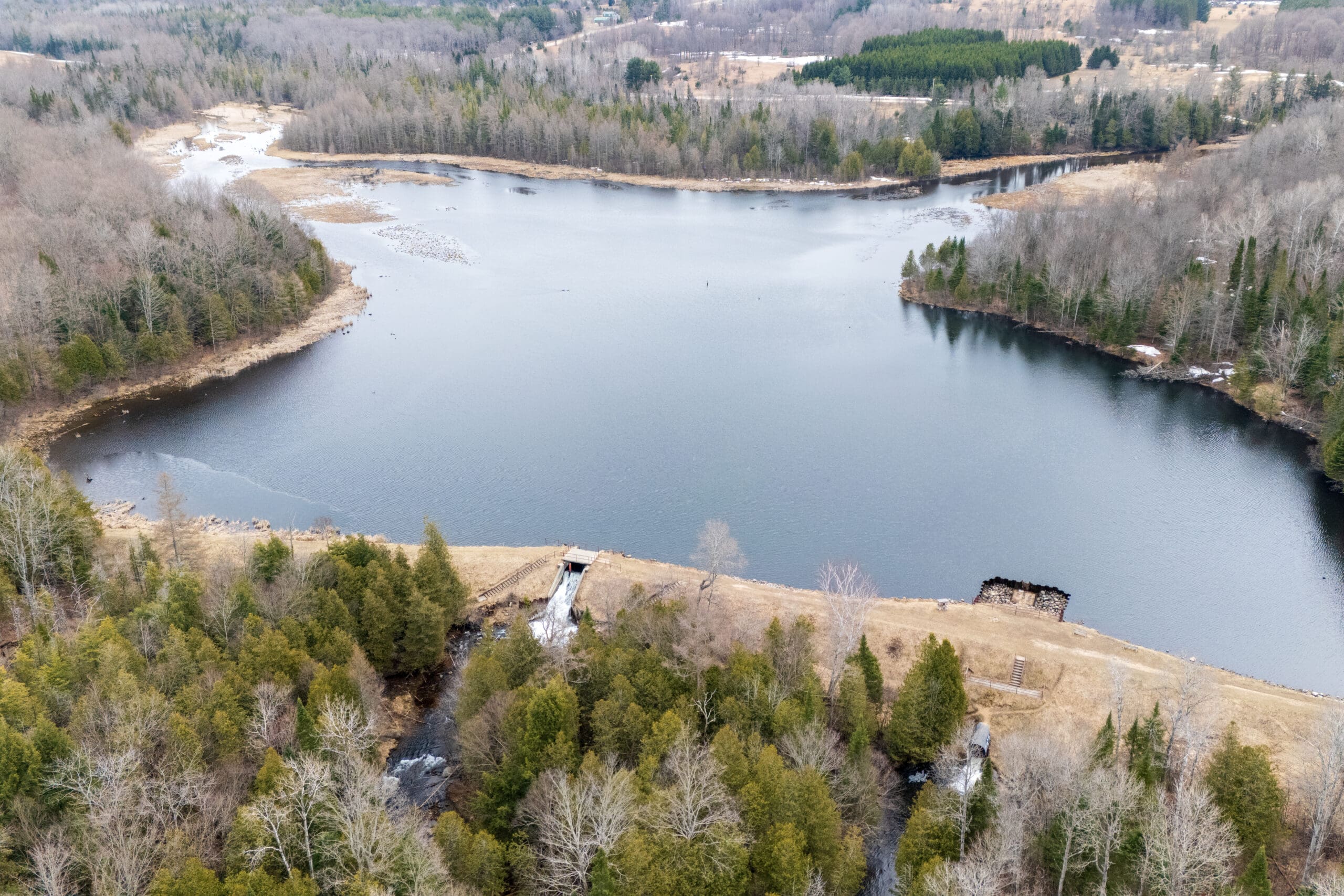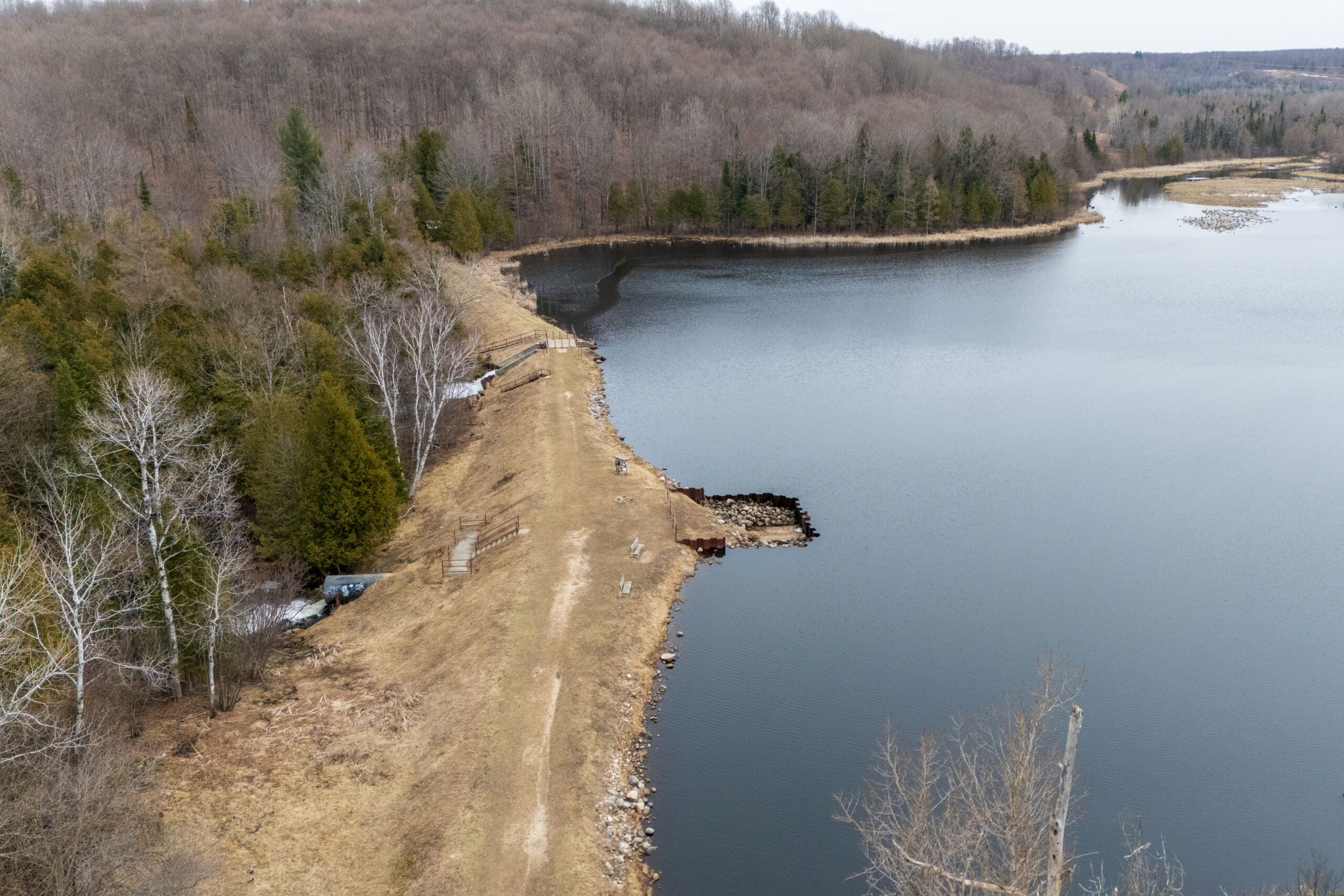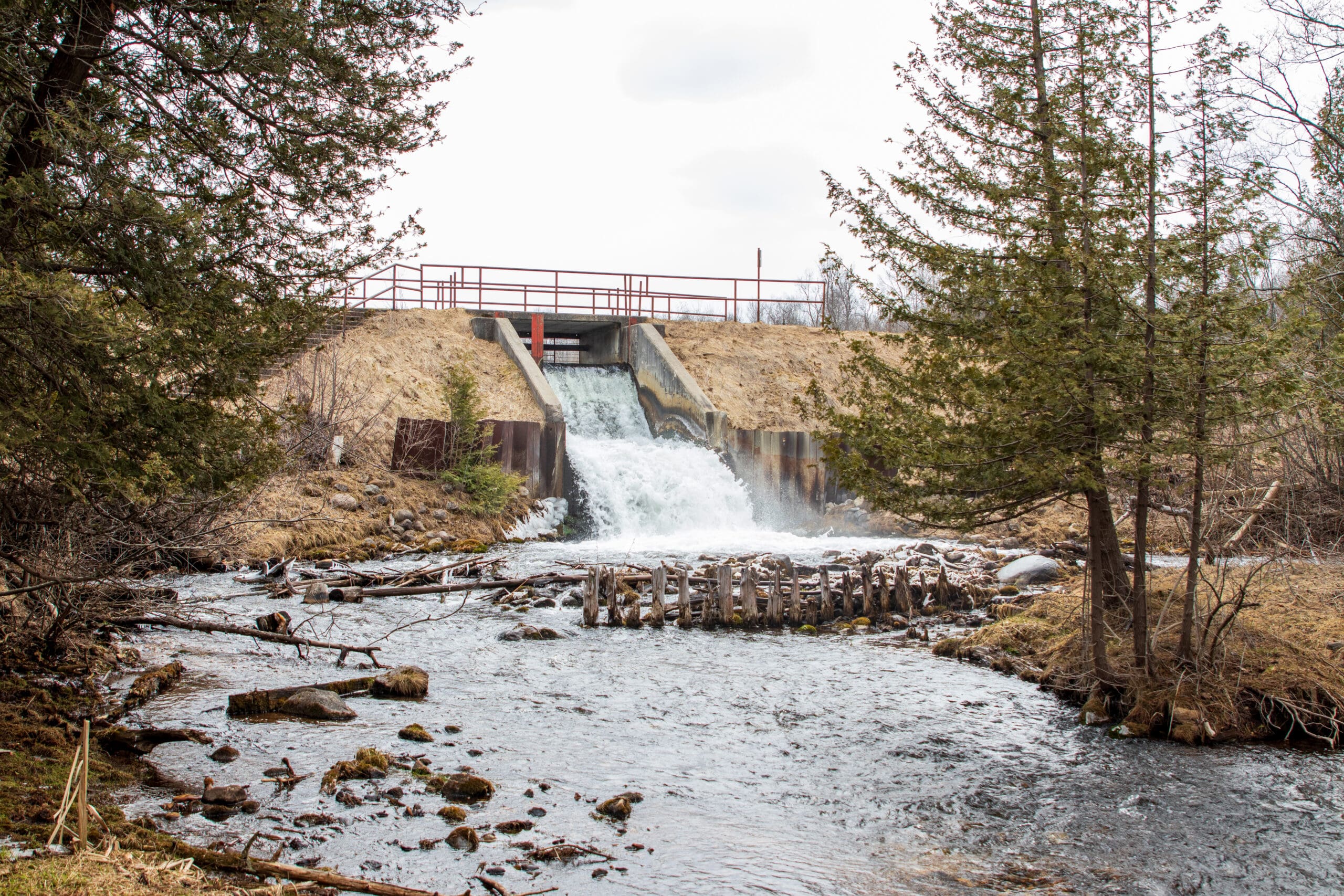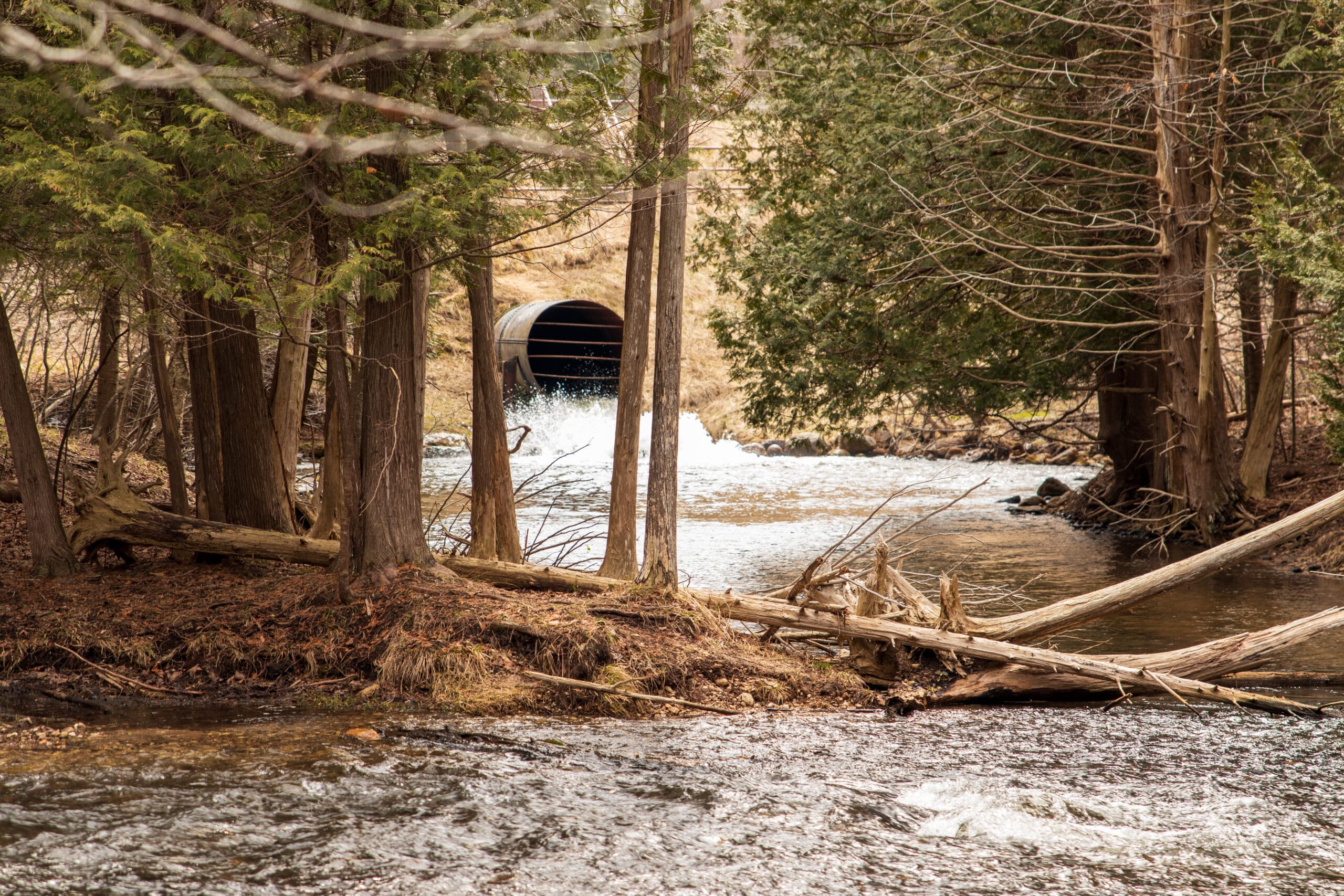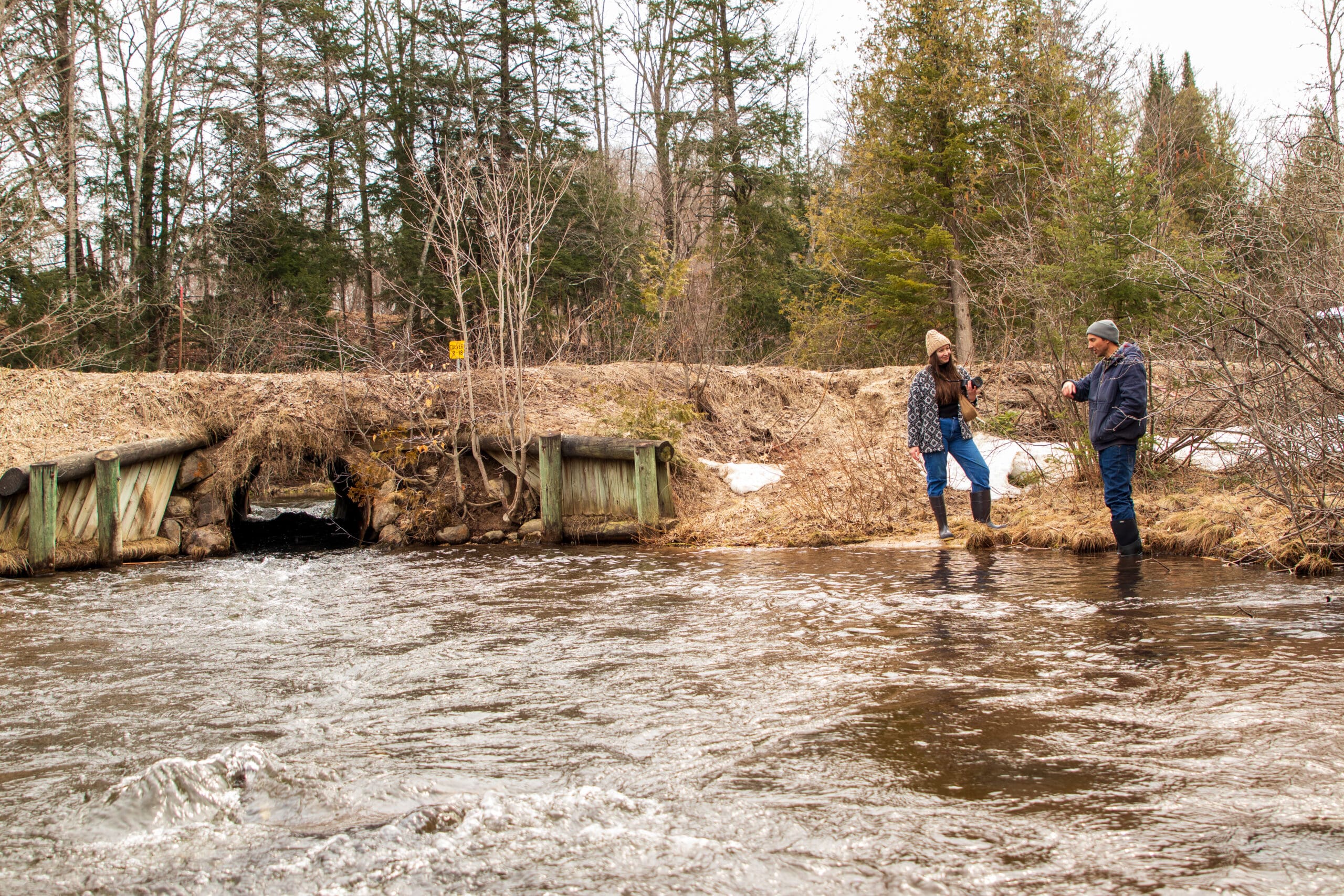Restoring the Wild Flow of the Rapid River
Project Highlights
Project Type
Dam Removal & Stream Crossing Replacement
River Miles Connected
Upstream Reaches: 21.6 Miles of Stream/Tributaries Reconnected
Downstream Reaches: 12.2 Miles reconnected to the Rapid River and 3.2 Miles reconnected to Torch River
Location of Project
Kalkaska County (Owners of the Dam and Natural Area)
Wildlife to be Benefited
Brook Trout, Brown Trout, Rainbow Trout, Anadromous Rainbow Trout (Steelhead) and Atlantic Salmon (resident of Torch Lake), Mottled Sculpin, Long Nose and White Suckers, aquatic macroinvertebrates, and multiple species of mayflies, caddisflies, and stoneflies.
Rugg Pond Dam
Hanson Road Stream Crossing
Project Overview
For the first time in over 120 years, a river in northern Michigan is preparing to return to its natural state. The Rugg Pond Dam, located at the confluence of the Little Rapid River and the Rapid River in Kalkaska County, is set for removal—marking a major milestone in the restoration of the Elk River Chain of Lakes (ERCOL) Watershed.
A Dam with Deep Roots
Built in 1904 by Ambrose E. Palmer—with help from local farmers who hauled rock and sediment—the dam once powered homes and businesses through the Kalkaska Power and Light Company. Ownership transferred to Consumers Power in 1950, and then to Kalkaska County in 1953, when the dam was decommissioned. Since then, it has remained in place—an aging structure that impounds 20 acres of water and sediment, altering the river’s natural flow.
Legend has it that even Ernest Hemingway once fished these waters. Whether or not that’s true, the Rapid River is indeed a premier trout stream, designated by the Michigan Department of Natural Resources. It’s the fastest-flowing and longest river in the ERCOL watershed, covering 18 miles as it winds through Rapid River, Cold Springs, and Clearwater Townships, eventually emptying into the Torch River between Torch Lake and Lake Skegemog.
Historical marker highlights the significance of Rugg Pond Dam as an early source of hydro-electric power for the village of Kalkaska.
Aerial photograph facing south shows the confluence of the Rapid River (left) and the Little Rapid River (right) at Rugg Pond.
Why Remove the Dam?
Momentum to remove the Rugg Pond Dam began building after a 2019 inspection by the Michigan Department of Environment, Great Lakes, and Energy (EGLE) classified the structure as having “high hazard potential.” The report cited slope erosion, deteriorating concrete, and significant sediment buildup—warning that a sudden failure could cause serious downstream damage. In response, an Emergency Action Plan was developed, and Kalkaska County began exploring long-term solutions. This included forming a Rugg Pond Dam Committee and hiring Spicer Group to conduct a feasibility study evaluating options for either removing the dam or retaining it by dredging the impoundment. Sediment testing was also conducted as part of this effort.
In September 2024, the Kalkaska County Board of Commissioners passed a resolution to pursue removal. The following month, they formally partnered with Conservation Resource Alliance (CRA) to lead the effort.
In April 2025, CRA was awarded $1 million through the Michigan Department of Environment, Great Lakes, and Energy’s Dam Risk Reduction Grant Program to support the removal of the dam and the broader ecological restoration of the site.
In May 2025, CRA received a grant from the Michigan Department of Natural Resources Fisheries Habitat Grant Program, as well as a second grant from the Great Lakes Fishery Trust—both supporting the engineering and permitting phase of the project.
A Major Ecological Win
Removing the Rugg Pond Dam will eliminate a deteriorating, high-risk structure, reduce maintenance costs, and restore the natural hydrology of the Rapid River. There is an estimated 210,000 cubic yards of sediment accumulated behind the dam that is also at risk unless dam removal is pursued. A dam removal and stream restoration project will prevent downstream impacts, while ensuring long-term stability and ecological health.
In addition to removing the dam, CRA will address a stream crossing at the south end of the impoundment, where Hanson Road crosses the Little Rapid River. An aging, undersized culvert currently restricts the river’s natural flow to just one-fifth of its original width, creating a barrier to aquatic organism passage.
The project will reconnect more than 21 miles of upstream habitat, restore 12.2 miles of the Rapid River, and improve water quality and wildlife habitat downstream in the Torch River (3.2 miles) and the Chain of Lakes—including Torch Lake (18,770 acres), Elk Lake (8,200 acres), and Lake Skegemog (2,766 acres).
Public Access and Community Connection
Public access is an essential part of this landscape. Kalkaska County owns the 102-acre Rugg Pond Natural Area, which encompasses Rugg Pond. The County intends to expand the trail network while providing sustainable river access. Just downstream from the dam, the state-owned Seven Bridges Natural Area offers trails and boardwalks and is managed by the Grand Traverse Regional Land Conservancy. Freedom Park, near Rapid City, remains a popular access point for both locals and visitors.
Stay tuned to CRA’s website and social media channels as we share updates, milestones, and ways to get involved throughout this transformational effort.
Projects like this are not possible without the help of our funders and partners. We’d like to send a special thank you to:
Partners
Conservation Resource Alliance | Kalkaska County | Rugg Pond Dam Committee | Rapid River Township | Kalkaska County Road Commission | Kalkaska Conservation District | U.S. Fish & Wildlife Service | Michigan Department of Natural Resources Fisheries Division | Michigan Department of Environment, Great Lakes and Energy | Grand Traverse Band of Ottawa and Chippewa Indians | The Watershed Center of Grand Traverse Bay | Tip of the Mitt Watershed Council | Michigan Trout Unlimited | Riparian property owners
Funders
Kalkaska County | Michigan Department of Environment, Great Lakes and Energy, Dam Risk Reduction Grant Program (DRRGP) | Great Lakes Fishery Trust Habitat Grant | Michigan Department of Natural Resources Fisheries Habitat Program
With support from River Care Funders: Packaging Corporation of America | DTE Foundation | Serra Family Foundation | Andrew R. and Janet F Miller Foundation | Walters Family Foundation | The Brookby Foundation

